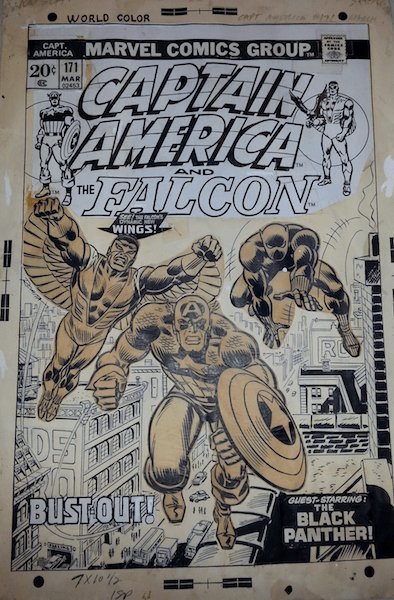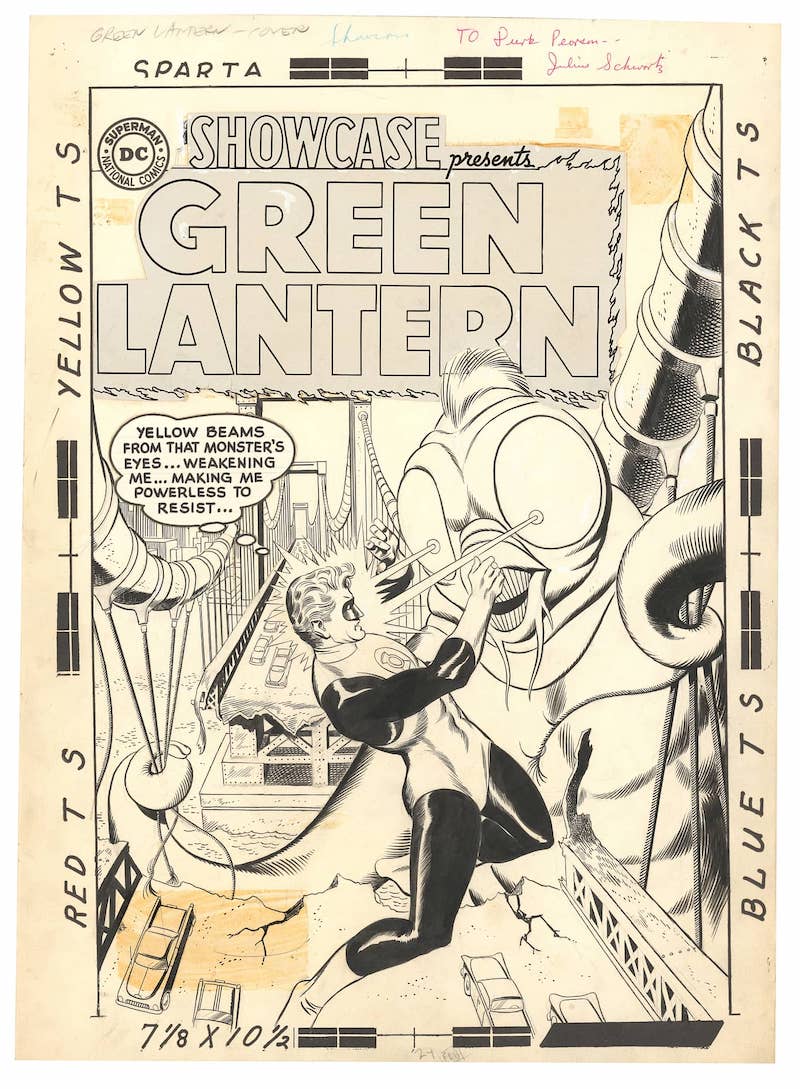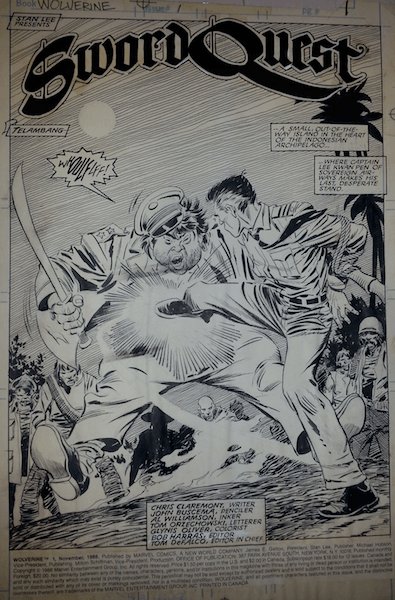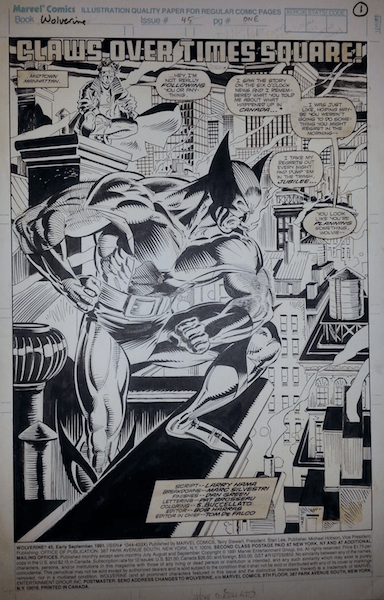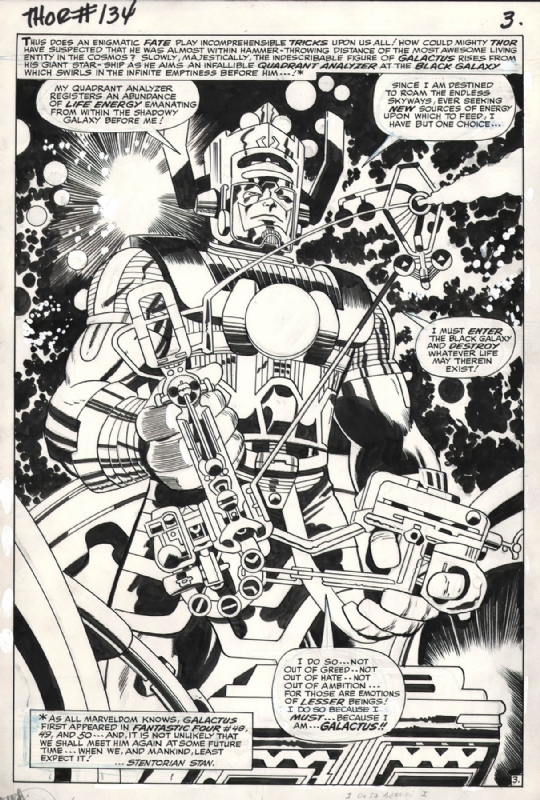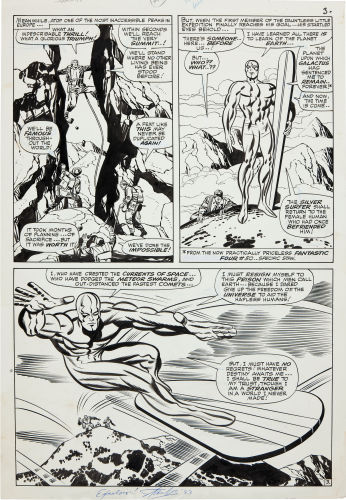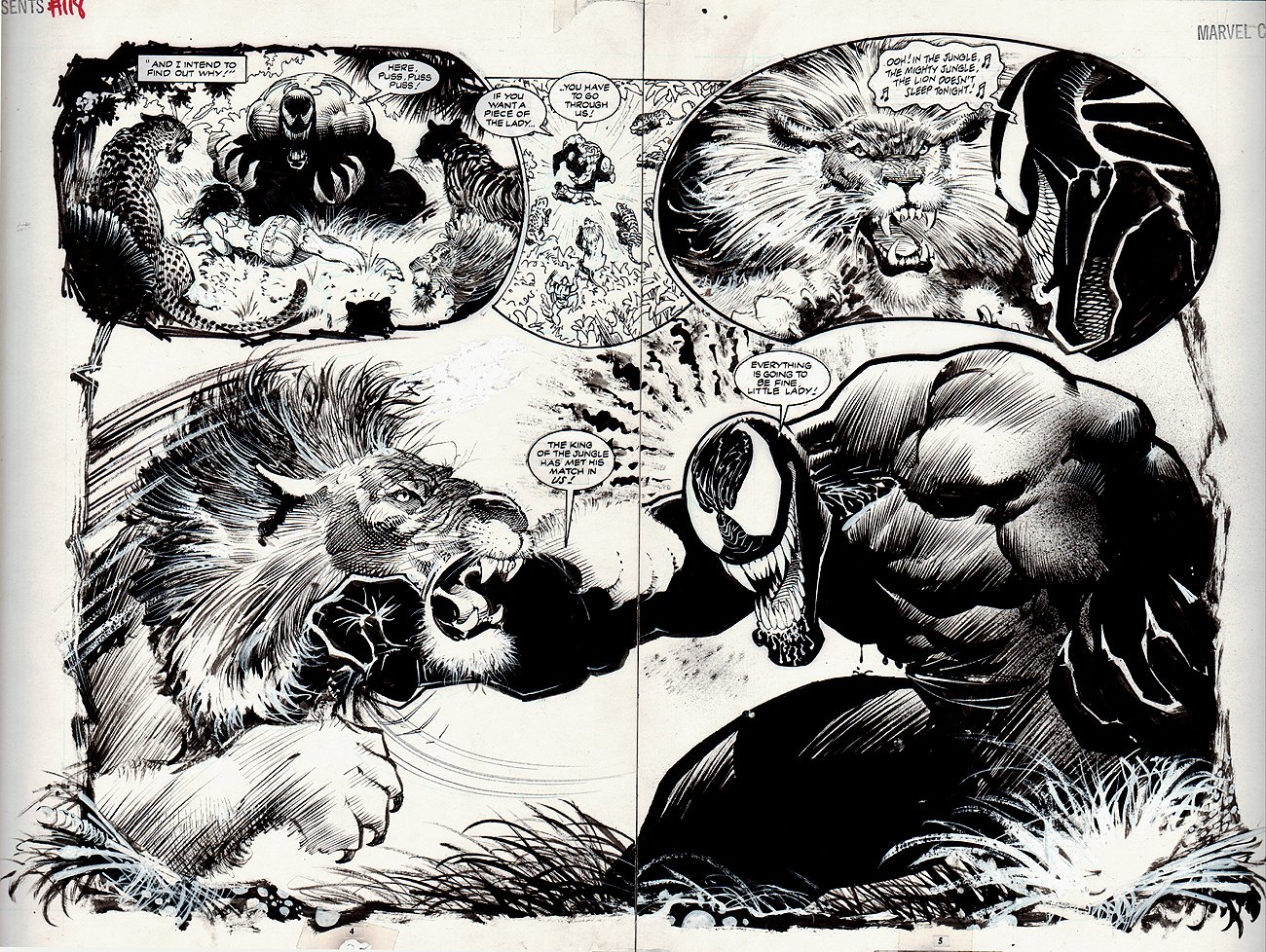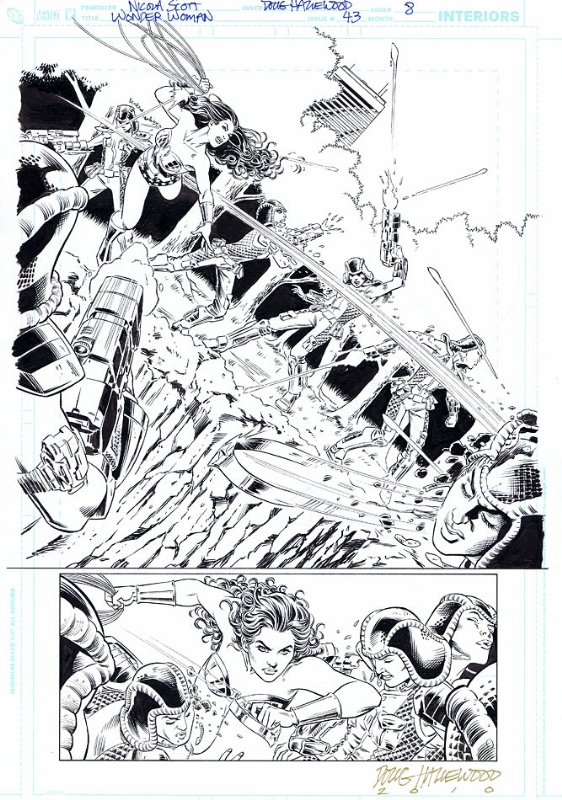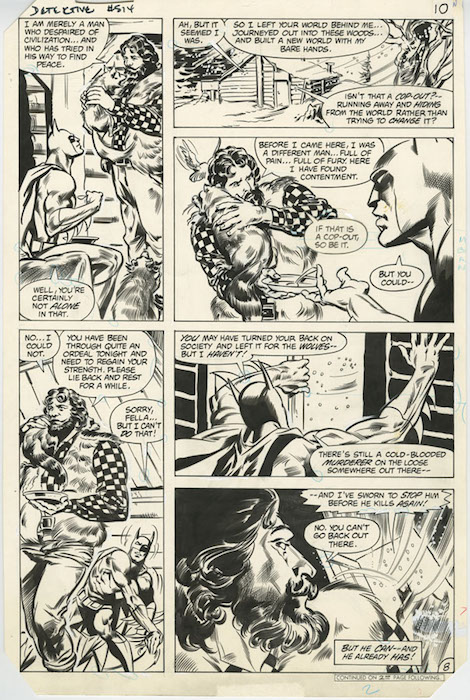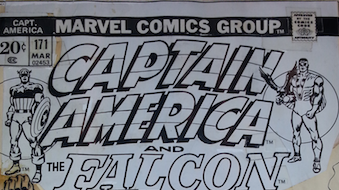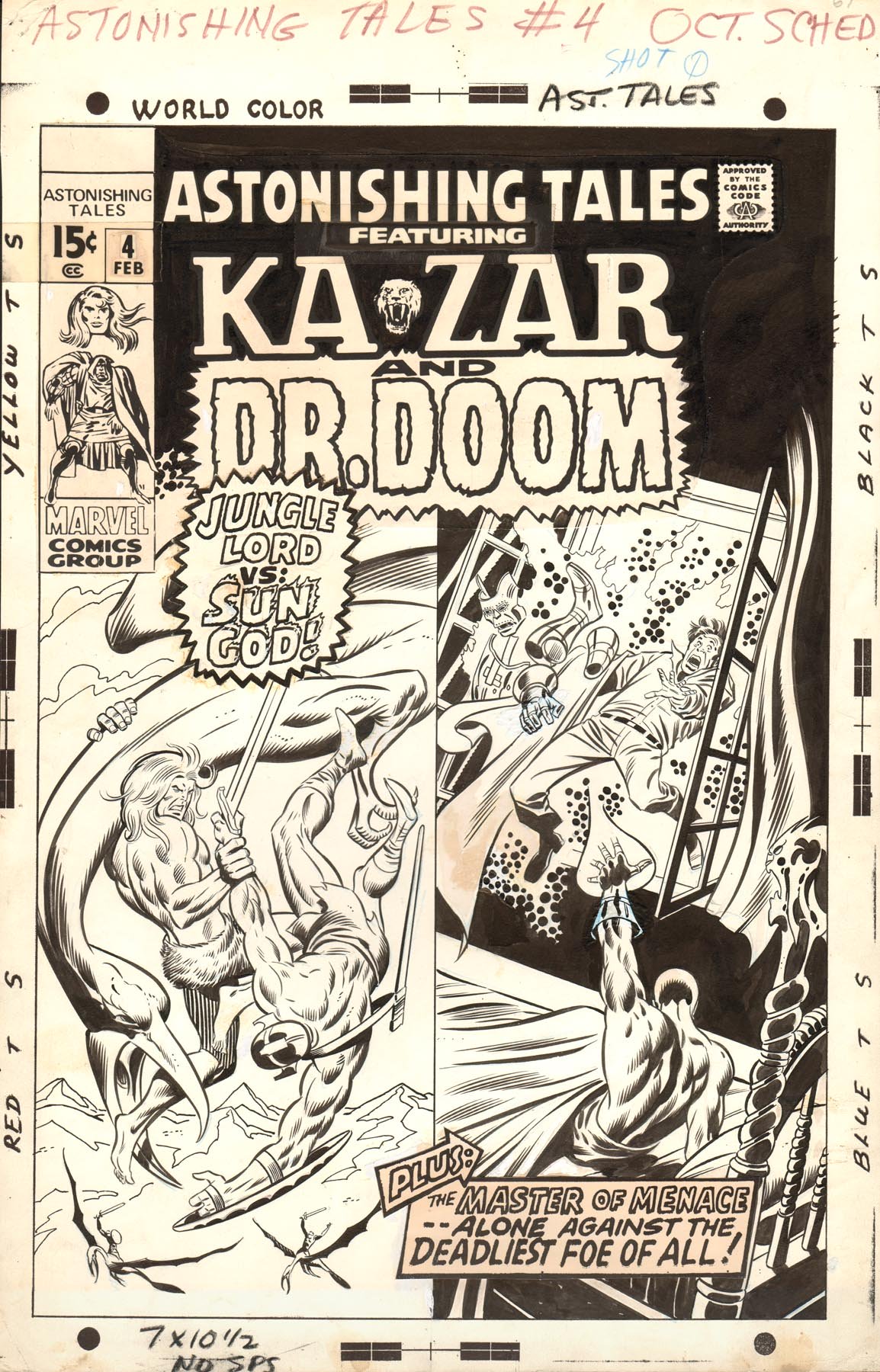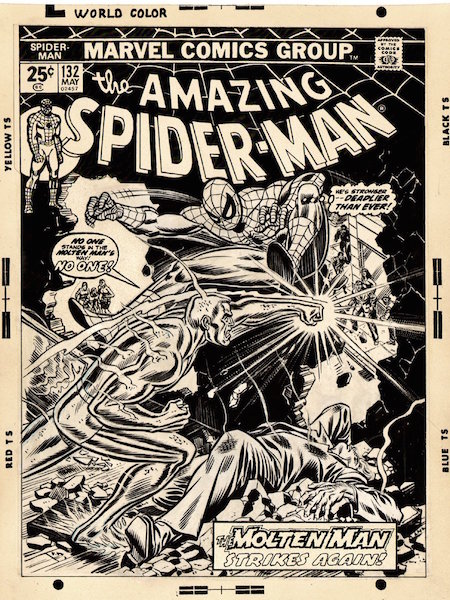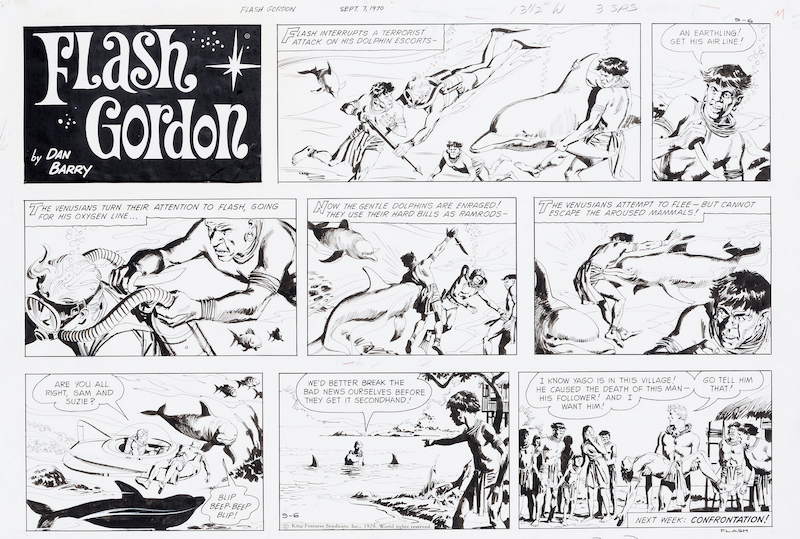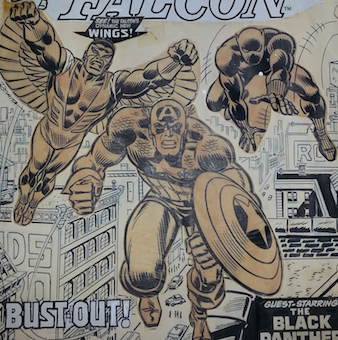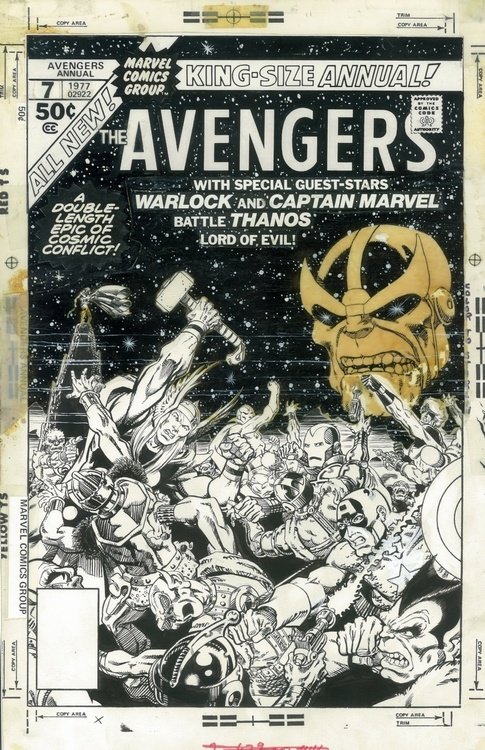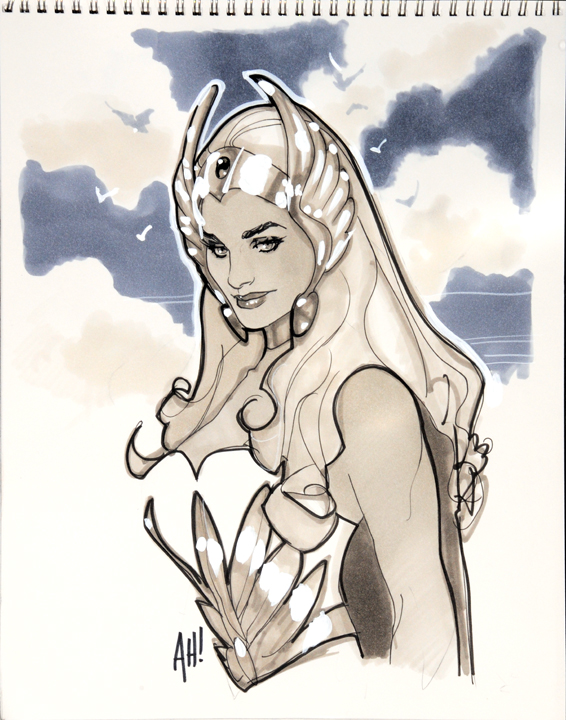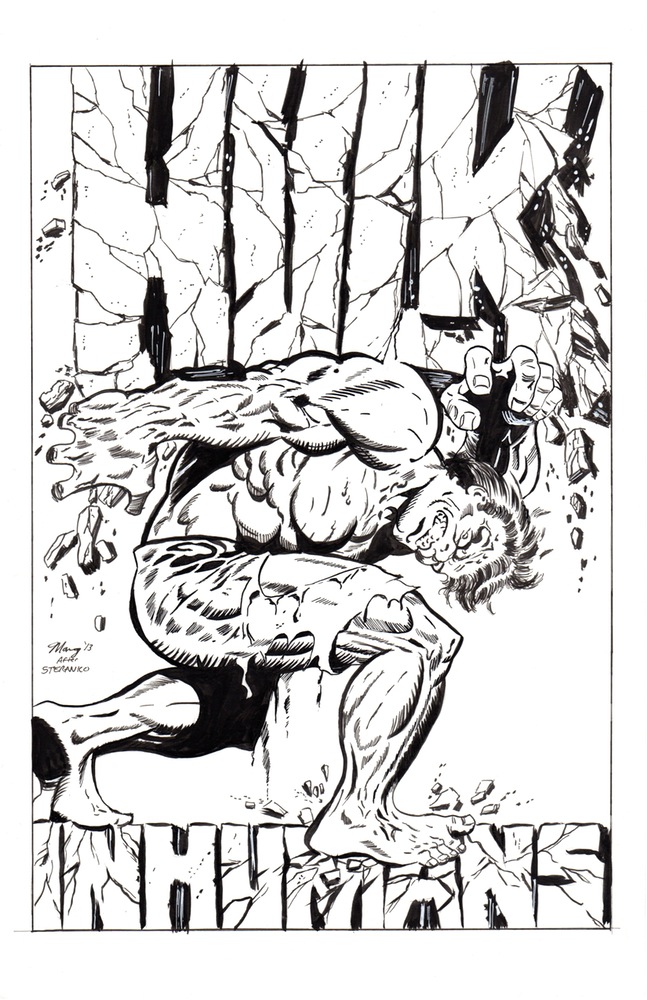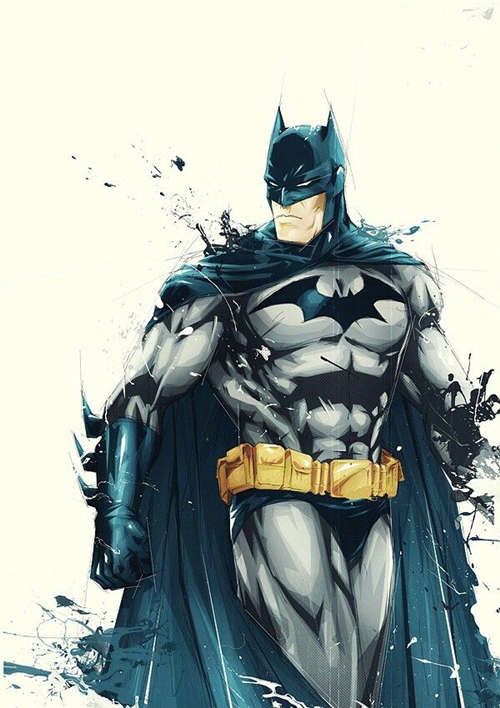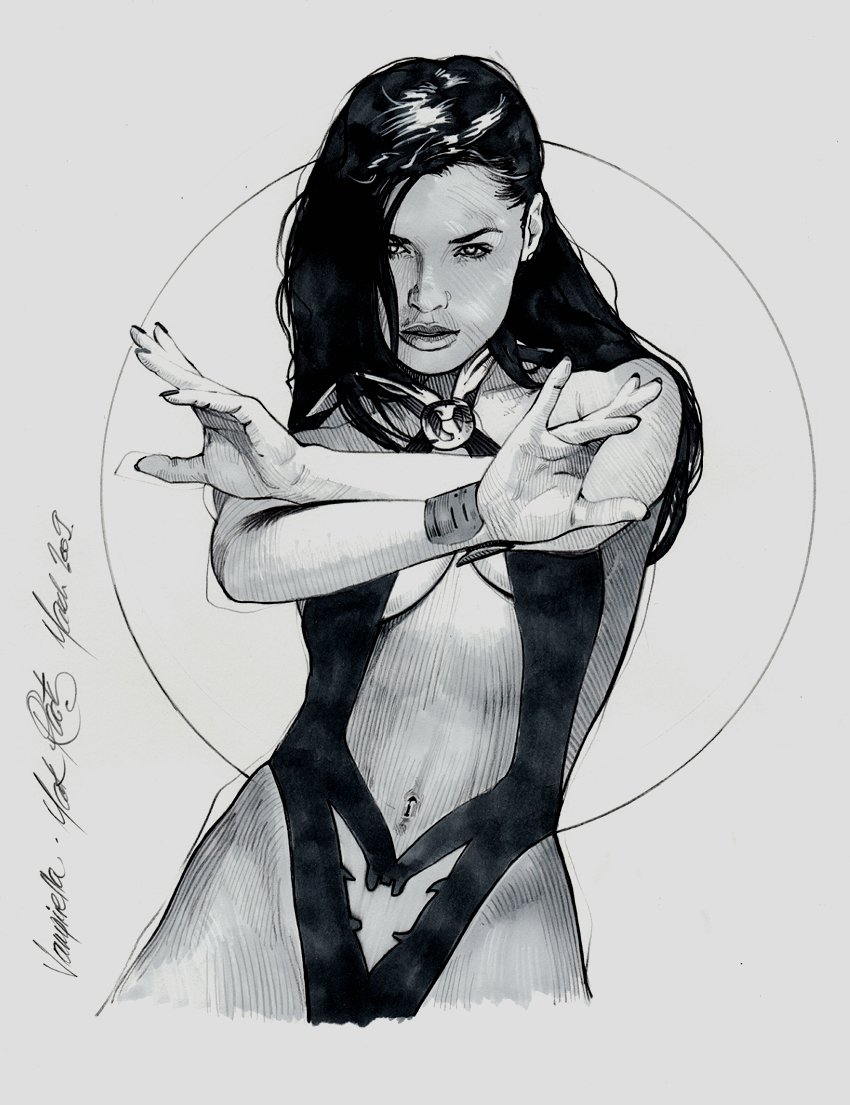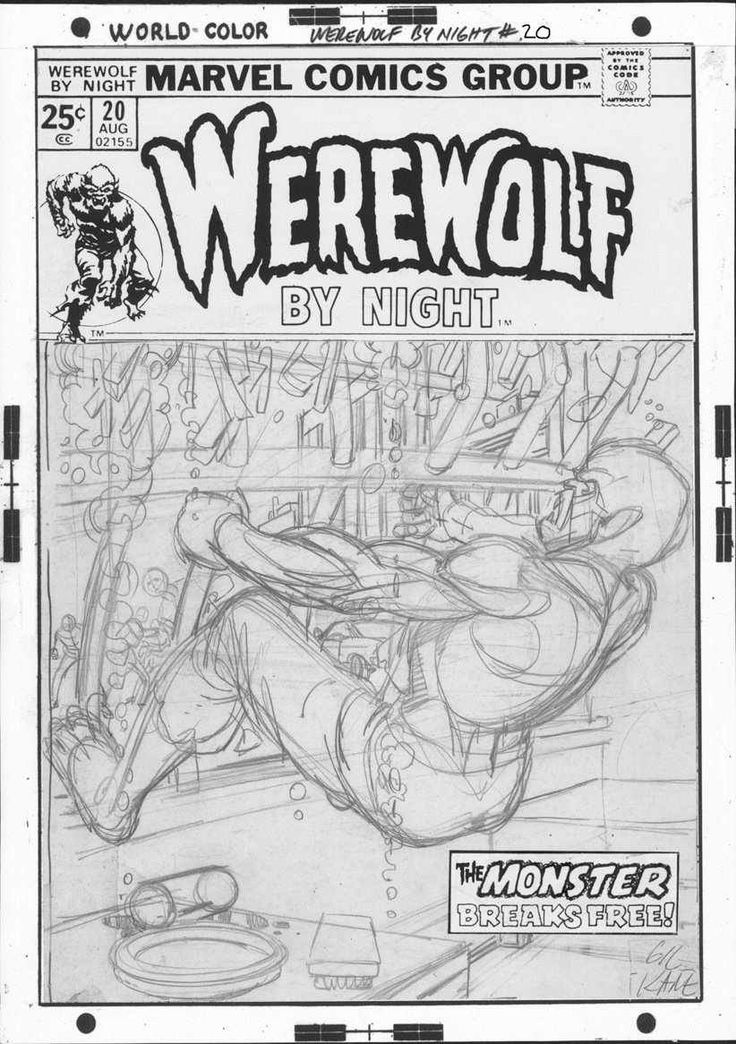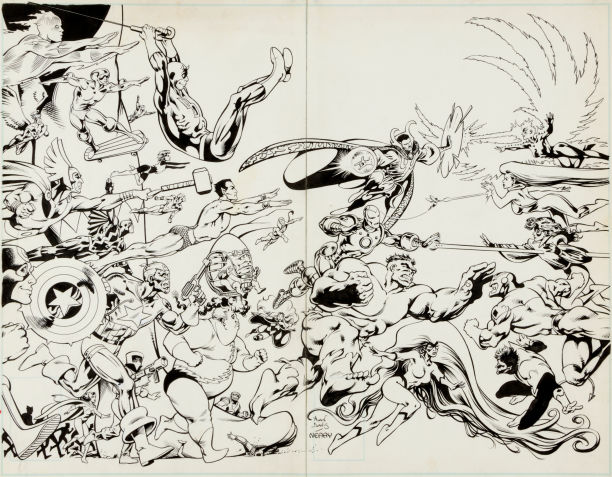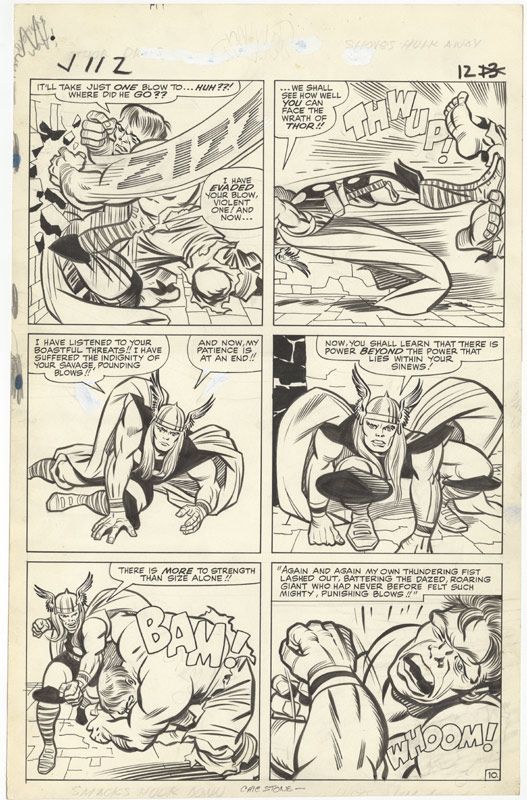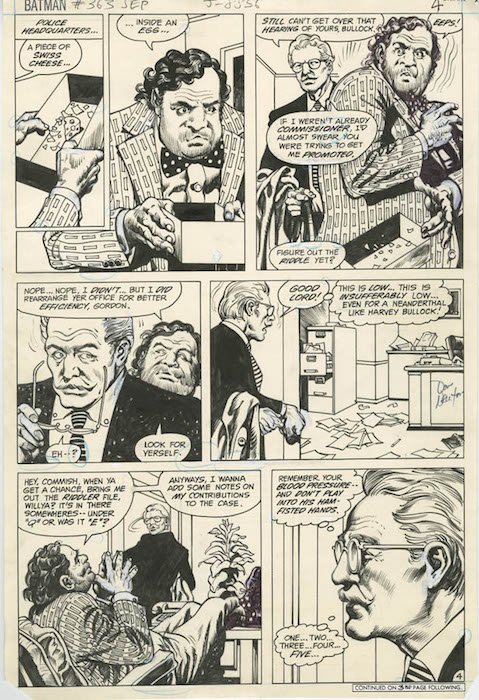Original Comic Art Terms, Jargon and Lingo Explained
Original Comic Art Terms, Jargon and Lingo Explained and Illustrated
If you're interested in collecting comic artwork, or have some original art and don't know what you've found, then you're in the right place.
Art pieces are not created equal. This article explains and illustrates each type of original artwork and some original artwork lingo used in the hobby/industry.
We don’t go into specific values on this page. This is a subject that is covered on other parts of the site. Our goal here is to give you the tools to describe a piece of original artwork like a pro.
Comic Art Terms, With Examples
Original Comic Art
Original comic art – A broad term used to describe a piece of art that is related to comic books.
This can include, but is not limited to, comic book art (published and unpublished), convention sketches, pinups, color guides, newspaper dailies and Sundays, card art, etc.
Posters, copies and prints are not original art.
Each piece of original art is a one of a kind.
Comic Book Cover Art
Cover – The cover art to a published comic book.
This is the original art to Captain America #171. The title is a stat (see below) and the figures are on vellum (see below).
The Showcase #24 cover art was brought to market by Sell My Comic Art and sold at Goldin in May 2022.
Title Splash Art
Title Splash – One of the more confusing comic art terms. A piece of comic art used to publish the first page of a comic book. Quite often this includes the indicia (see below).
Generally, title splash pages are the second-most valuable pieces after cover art pieces.
Two Wolverine title splash pages are shown above.
Splash Page Art
Splash Page – An art page void of any panels. Where the character and background fill the entire page.
The only difference between a splash and a title splash is a splash comes in the middle of the book.
Comic Artwork Half Splash Page
Half Splash – A page where half is a single panel and the other half is divided into multiple panels.
Above is a great example of a Silver Surfer half splash page.
Double-Page Splash Original Comic Art
Double Page Splash – This comic art tern describes two pages forming one piece of art. Comprises of two pages where the character and background fills both pages.
This example is an awesome Venom double-page splash by artist Sam Keith.
Three Quarter Splash Page Art
Three Quarter Splash – A page where 1/3 is a single panel and 2/3 is divided into multiple panels.
Above is a Wonder Woman three quarter splash page by Nicola Scott.
Original Comic Book Panel Page Art
Panel Page – This is an interior comic book page that is divided into individual sections or panels. This is what most people think of in comic art terms when you say comic book page/art.
Shown is a panel page from Detective Comics #514 by Don Newton, featuring Batman.
Comic Book Art Stats or Production Art
Stat – Another tricky comic art term. A piece of production art or copied art (meaning not original art) that is glued to an original art piece, to either alter its appearance or to reduce production time.
Quite often word bubbles and titles are stats. Entire pages can be stats as well. This is called production art in the hobby/industry.
Shown above is a close-up from the Captain America #171 cover by John Romita, with a title stat used.
Above is the Astonishing Tales #4 cover art, featuring stats on the title and bubble text portions.
Light Box
Light Box – In comic art terms, a lightbox is a device that is used to transfer an image from one piece of paper to another. This can be used as a verb as well for example, "as piece of art has been light boxed."
It's really not possible to illustrate this, but a sign that a piece has been light boxed is when an inked piece is void of any pencils.
A light box looks identical to any other piece of art unless you can examine it closely.
Daily Strip Art
Daily – Comic art that was published in a newspaper, every day of the the week with exception of Sunday. These pages are much smaller that their Sunday cousin and typically comprise of three or four panels.
Shown is a Ben Casey strip by the comic book artist Neal Adams.
Overlay
Overlay – Another weird comic art term. A piece of clear acetate that has been taped to the top of an original piece of artwork to allow a hinging motion.
Images, whether it is stats or original art, are attached to the acetate and placed over the top of the original art. The tape hinge allows for the acetate to be lifted up, revealing the art underneath.
Sunday Comic Strip Artwork
Sunday – Comic art term to describe art that was published in a newspaper on, you guessed it, Sunday. If you were to take three daily strips and put them together you would have a single Sunday.
Vellum on Comic Book Cover Art
Vellum – Historically, vellum was parchment made from animal hide. In comic art terms it is a transparent film that artists could trace their pencils in ink and then cut out and glue the art to a finished board.
Vellum is easy to spot because the glue that was used has now
turned yellow. Shown above, the figures from the Captain America #171 cover art are drawn on vellum and glued to the cover.
The Thanos head is created on vellum and glued to the cover art for Avengers Annual #7.
Convention Sketch Art
Convention Sketch – A comic art term describing a small quick drawing that an artist does at a convention, usually for a fan who has paid for the privilege.
This sketch is by the super-popular convention sketcher Adam Hughes.
Recreation Art Pieces
Recreation – A comic art term describing piece of art that is duplicated by another artist at a later time, in their own style.
Most often, an artist recreates covers, but interior pages can be recreations as well.
Breakdowns
Breakdowns – A comic art term used to describe when a penciler supplies the inker with little detail in their drawing. It is the responsibility of the inker to fill in the detail.
It is well known in the art collecting community that the later issues in the Daredevil Frank Miller run were just Miller Breakdowns, and Janson finishes and inks.
Pin-Up Comic Art
Pin-up – Is an image that shows a full-length view of its subject, and characteristically has an element of a theme or some kind of story.
Vampirella pin-up original art piece.
Preliminary (Prelim) Comic Book Art
Preliminary (Prelim for short) – A term for a roughly-drawn piece of original comic art that was done in advance of starting on a more detailed and highly finished piece.
The above is a prelim cover sketch for Werewolf by Night #20, pencilled by Gil Kane.
Wrap-Around Cover Art
Wrap-around cover – Two pages of art that comprise of the front and back covers.
If the two pages were laid side by side, then they would make a single image.
Strip, or Comic Strip
Strip – Short for Comic Strip. Dailies are often called strips.
Original Card Artwork
Card Art – Original art created to produce trading cards. Quite often these are paintings.
Color Guide
Color guide – Back in the day colors were decided using a print size copy that was hand colored by the colorist. These pieces are known as color guides in comic art terms.
The key word here is "copy". The line work on color guide is not original. The only original work is the color.
Battle Page Art
Battle Page – A comic art term for a page where two subjects are in combat.
Some good examples are found in the many Hulk vs Thing battles over the years, starting with Fantastic Four #12 by Jack Kirby, and this classic battle page from Journey into Mystery #112, with Hulk vs Thor.
Talking Head Art Page
Talking Head Page – Original art pages that comprise of unknown characters standing around and talking.
Above is a Don Newton talking head page from Batman #363.
More General Comic Art Terms
Some comic art terms don't relate to the type of art, but are general ways in which art is described.
If you want to understand what people are talking about when they refer to comic book artwork, then you'll need to get a grip on these phrases too.
Production Comic Art Terms
Production art – A copy of the finished original art use in the production of the book. This is not original comic art.
Story Page Number vs Book Page Number
Story Page Number – A number that signifies a comic art page’s placement in a story. This number is typically located in the lower right hand corner of the page.
Not to be confused with...
Book Page Number – a number that signifies a comic art page's placement in the book. This number is typically written on the top margin of the page.
Golden age books have multiple stories in them, so each book could have multiple story page number 1s.
How to Describe an Art Page
The proper way to describe a page of art is Title, Issue, Story Page Number. Example:
"Green Lantern #76 Page 5"
If there are no story page numbers, then use the book page number.
The Art Medium
Medium – Refers to the material used to create an art page, such as pencil, ink, acrylic paint, oil paint, etc.
Bristol Board
Bristol Board – A fine, smooth board used for drawing and cutting.
Twice-Up Artwork
Twice-up – Also known as double-up. Art drawn on a board with an image size of 12 x 18 inches.
Essentially the art on these boards are twice the size of the printed material, and adhered to a 2/3 ratio of 6 Inch wide x 9 inch tall art area of the printed book.
Standard Comic Artwork
Standard – Art drawn on a board with an image size of 10 x 15 inches.
In 1967, Murphy Anderson, the artist working on The Spectre at the time, wanted to work smaller. He chose 10 x 15 inches, because it still adhered to the 6 x 9 ratio.
Eventually DC and Marvel adopted this as the new standard.
Comic Book Indicia

Indicia – A block of text that is included at the bottom of page 1 of a comic book.
Relevant information included in the indicia is book title, Issue number Volume, Date Published, Publisher.
Inks and Inkers
Inks – The finished art that is applied over the pencils.
Inker – The artist that applies the ink to the comic art page (also known as the secondary artist).
This does not always have to be the same person as the penciler. In some modern pieces the inks and pencils are on two separate boards.
Pencils and Pencillers
Pencils – The first layer of art applied to the board in graphite or blue pencils.
Penciller – The artist that applies the pencils to the comic art page (also known as the primary artist). When someone says that a piece of art was done by Jack Kirby, this means that he was the penciller.
Colorist
Colorist – The artist who determines the colors in a comic book through the use of color guides.
*An interesting bit of history of why the Hulk is green and not gray.
When Jack Kirby and Stan Lee brought the Hulk to life in 1962 he was originally gray.
They quickly found that it was difficult to maintain a consistent shade of gray in production. He would often come out dull and washed out, much like dishwater. Other times he would be almost black.
By the second issue it was decided that it would be easier to reproduce a constant shade of green.
Published Art vs Unpublished Art
Published vs Unpublished Art – A published piece of art is a work that has been printed in mass and distributed.
Unpublished comic art, for whatever reason, has not. Sometimes an unpublished piece was commissioned and then rejected, or created by an artist on-spec in the hope of getting hired.
Go from Comic Art Terms Explained to the Home Page
Want to Sell Comic Books?
If you have comic books you'd like to sell or have appraised, then please visit our sister website,
Sell My Comic Books.
